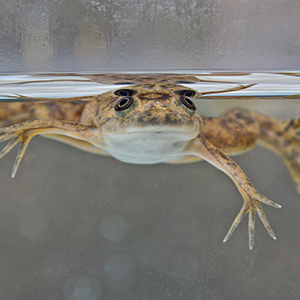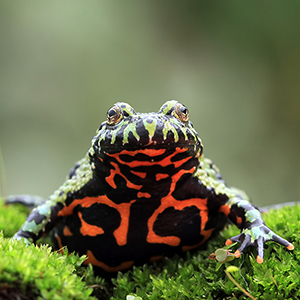
Meet Some Amazing Amphibians
Amphibian Care. Review your favorite pet amphibian species. These online guides discuss habitat setup, including temperament, diet, nutrition, and safety information.

Pacman Frog
Great for Beginners
A Pacman Frog’s appetite matches its size. In fact, this frog will pretty much eat anything that moves within striking distance of where they sit and wait on the ground. Additionally, as with all frogs, handling should occur only when necessary. Review our Pacman Frog pet care guide.

Tiger Salamander
Great for Beginners
Tiger salamanders are the largest land-based salamanders. For the most part, this salamander adapts well to captivity and makes an excellent and hardy pet. What’s more, they are the most interactive species of amphibians. Read more about amphibian pet care for the Tiger Salamander.

African Clawed Frog
Great for Beginners
African clawed frogs can be fun pets to watch. However, this frog is not meant for handling. Nevertheless, these frogs are hardy, have relatively easy care instructions, and make excellent first-time pets. Review our amphibian pet care guide for African Clawed Frogs.

White’s Tree Frogs
Great for Beginners
White’s Tree Frogs are docile amphibians and are unafraid of humans. In other words, they can become relatively tame and tolerate gentle handling with time. With this in mind, these frogs make great first amphibian pets. Read more about amphibian pet care for White’s Tree Frogs.
Related Searches
Amphibian Care

